The Hidden Food Gem of Northeast India
Welcome to Agartala, the capital city of Tripura, and a city where food has a distinct dialect that is unique to the region. If you're interested in trying new foods, Agartala will surprise your palate with its earthy flavours as well as healthy and nutritious ingredients. traditional cooking techniques.
Agartala's cuisine isn't too hot or oily. It's cozy, comfortable, and bursting with flavor that is natural. From traditional dishes made from fermented fish to sweets and snacks inspired by Bengali, every dish served in this city has a story.
Enter the delightful world of Agartala, where every meal tells a captivating story! In the beautiful northeast of India, Agartala is a city that is awash with flavors unlike anything you've ever tasted. Imagine eating dishes that mix Bengali traditional cuisine with exotic Tripuri traditions. That's precisely the Agartala's vibrant restaurant scene.
What Makes Agartala Food So Special?
The food scene in Agartala can be described as pure magic! Imagine these: traditional tribal recipes colliding with Bengali home food, all spiced with the love of neighbouring Bangladesh. This amazing mix creates dishes that are both traditional and awe-inspiring, offering delicious comfort food with exciting variations that will transport your taste buds to a new level of delight!
The indigenous Tripuri community uses traditional cooking techniques and ingredients that have been handed over through generations. Their focus on bamboo leaves, indigenous herbs, and fermented fish gives distinct flavors that set Agartala's food apart from other Northeastern Indian culinary traditions.
The Amazing Ingredients That Create Magic
Rice: The Golden Heart of Every Meal
Rice isn't just a food item in Agartala, it's a love story in a bowl! From white fluffy rice you can lick, to unique red rice that's filled with goodness, each grain tells a tale. Local favourites like 'Kajal Sal' and 'Binni' are unique in their flavors that will surprise you. It's like finding hidden treasures within every bite!
Red rice, also known locally as 'Lal Chal’, is a significant ingredient in Tripuri culture and is believed to be superior in nutrition. It is known for its nutty flavor and is typically served at rituals, festivals, and religious celebrations. Rice preparation in Agartala families is a form of art that each family has their preferred method for achieving the ideal texture and aroma.
Fish: Fresh, Flavorful & Divine!
Prepare yourself for a fishing lover's paradise! The ponds and rivers of Agartala are full of amazing species of fish, including Rohu, Catla, and the renowned Hilsa. The secret? Local chefs lightly cook their seafood in a smoky mustard oil before serving it in curries. This easy trick will lock in amazing flavors that will make you shut your eyes while smiling at every bite!
Bamboo Shoots: The Star Ingredient That Changes Everything!
Here's where it gets exciting! Bamboo shoots (called "Muya" locally) are the secret weapon of Agartala. Fresh ones are crisp and slightly bitter in a delicious way. Meanwhile, fermented bamboo shoots possess a remarkable richness of flavor that turns everyday dishes into unforgettable experiences. Imagine them as natural umami bombs!
Berma: The Fermented Fish Delicacy
Berma is a fermented paste of fish that is used as a key flavoring ingredient in Tripuri food. It is made primarily of small, delicate fish that are dried, then salted and fermented for a number of months. Berma has an intensely rich aroma and flavor. Although it may seem daunting to newcomers, locals believe it is essential to have an authentic flavor in a variety of traditional dishes.
Making Berma is a common seasonal event typically performed during the dry seasons when fish can be dried appropriately. Each family has their unique techniques to prepare Berma, and it is usually handed down from generation to generation as recipes that are closely guarded.
Must-Try Dishes That'll Blow Your Mind
Mui Borok: The Ultimate Traditional Feast
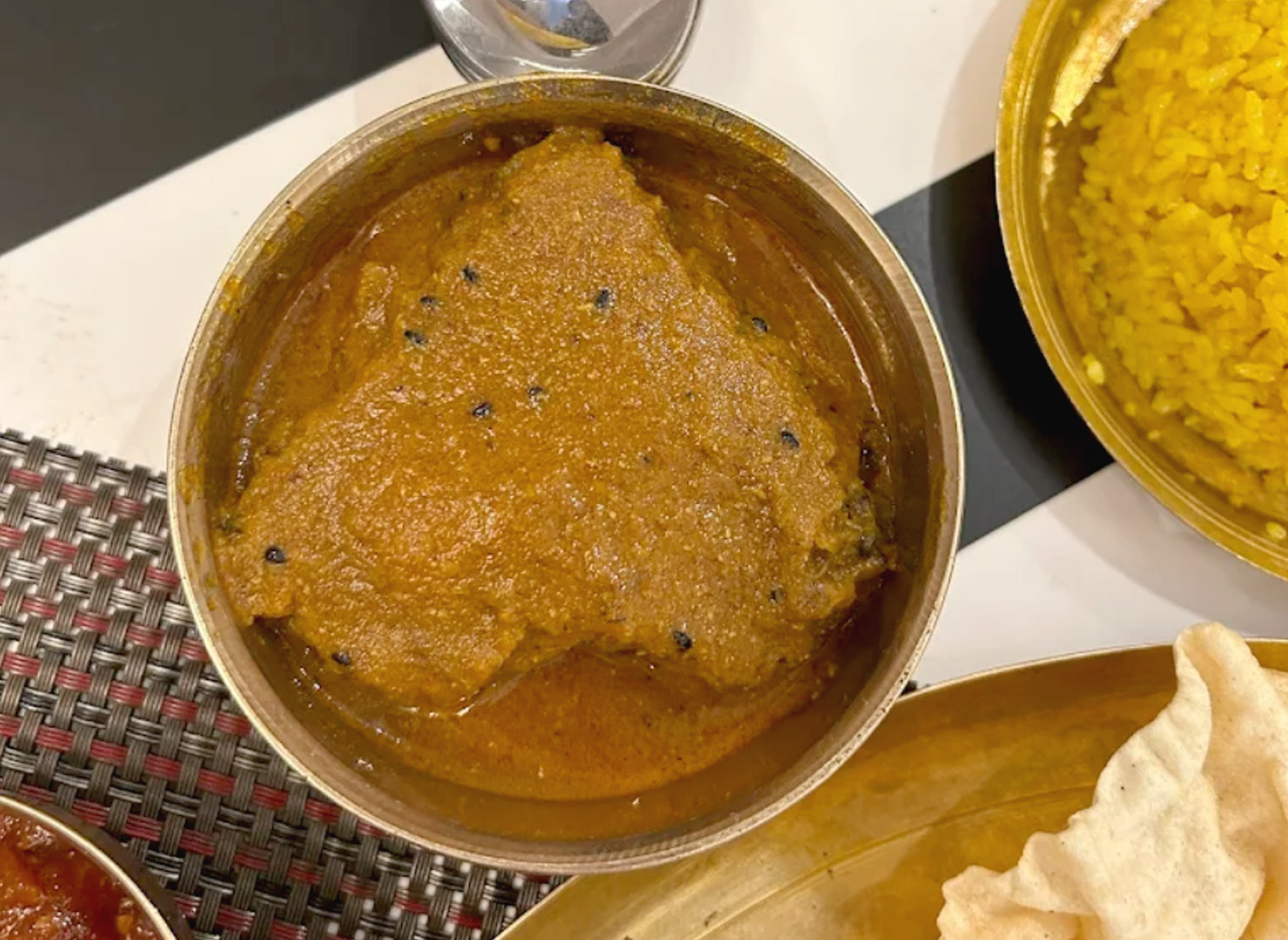
Imagine eating a meal that's an occasion on your plate! The Mui-Borok dish is the most coveted of Tripuri cuisine. It's a magnificent menu that includes the most delicious curry made of fish or pork, bamboo shoots, as well as the enchanting Burmese taste. It's comfort food that binds you to the ages of tradition with each bite.
Alongside the main dish are different side dishes like steamed vegetables, which often include local greens such as "Guduchi" leaves or wild varieties of spinach. The vegetables are typically cooked with very little spice, concentrating on their natural flavor and nutritional value.
Kosoi Bwtwi: Smoked Fish Curry
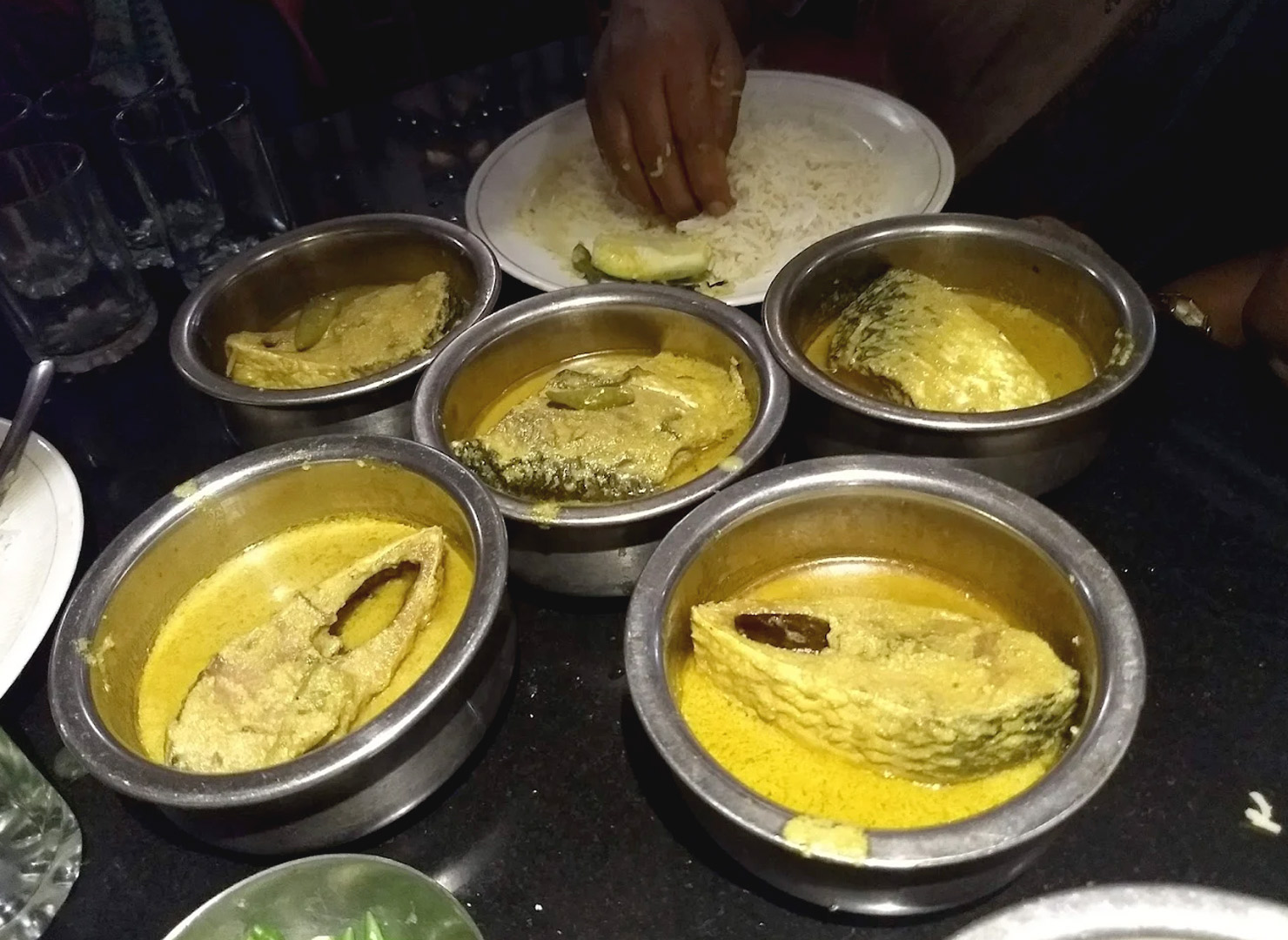
Kosoi Bwtwi is one of the cherished cooked fish curries, smoked, which is a perfect example of the Tripuri affection for fish-based dishes. The fish, usually tiny river fish, are smoked over a wood flame and giving it a distinctive smoky flavor that is evident throughout all of the food. The process of smoking does not just add flavor, but also preserves the fish.
The smoked fish is cooked in a mild curry that includes onions, ginger, garlic, a touch of garlic as well as traditional spices. The secret to it is the harmony between the fish's smoky flavor and the spiciness of the spices. Green chilies are a great source of heat, and a hint of mustard oil adds the signature Bengali influence. It's an exotic curry that has layers of flavor, spiced, spicy, and extremely delicious.
Panch Phoron Tarkaari: Five-Spice Vegetable Curry
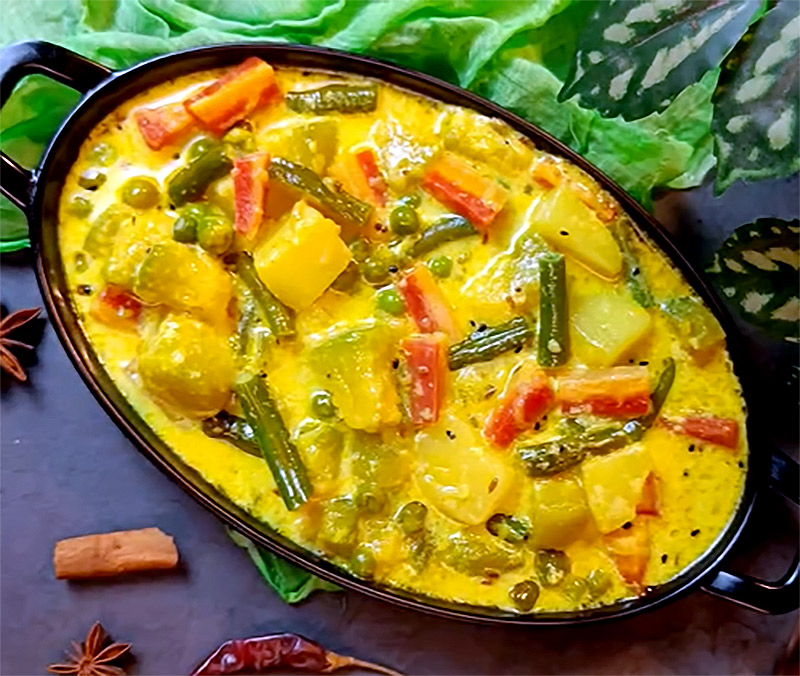
Inspired by Bengali food, but modified to the local taste, Panch Phoron Tarkaari demonstrates how Bengali influence on the Agartala food culture. Panch Phoron comprises a mix of five spices that are whole that including cumin seeds, fennel seeds, and the seeds of fenugreek, nigella seeds, as well as mustard seeds. This spice blend is integral in Bengali cooking and is widely used by Agartala kitchens.
The ingredients used in this curry are typically local seasonal produce such as bottle gourd, ridge gourd, eggplant, and okra. The method of cooking involves frying Panch Phoron in mustard oil. Panch Phoron in mustard oil until the spices release their flavor, and then add the vegetables with only a little water to make a dry curry. It is a dish in which each spice can be tasted and harmoniously with the vegetable's natural flavor.
Chakhwi: Traditional Rice Wine
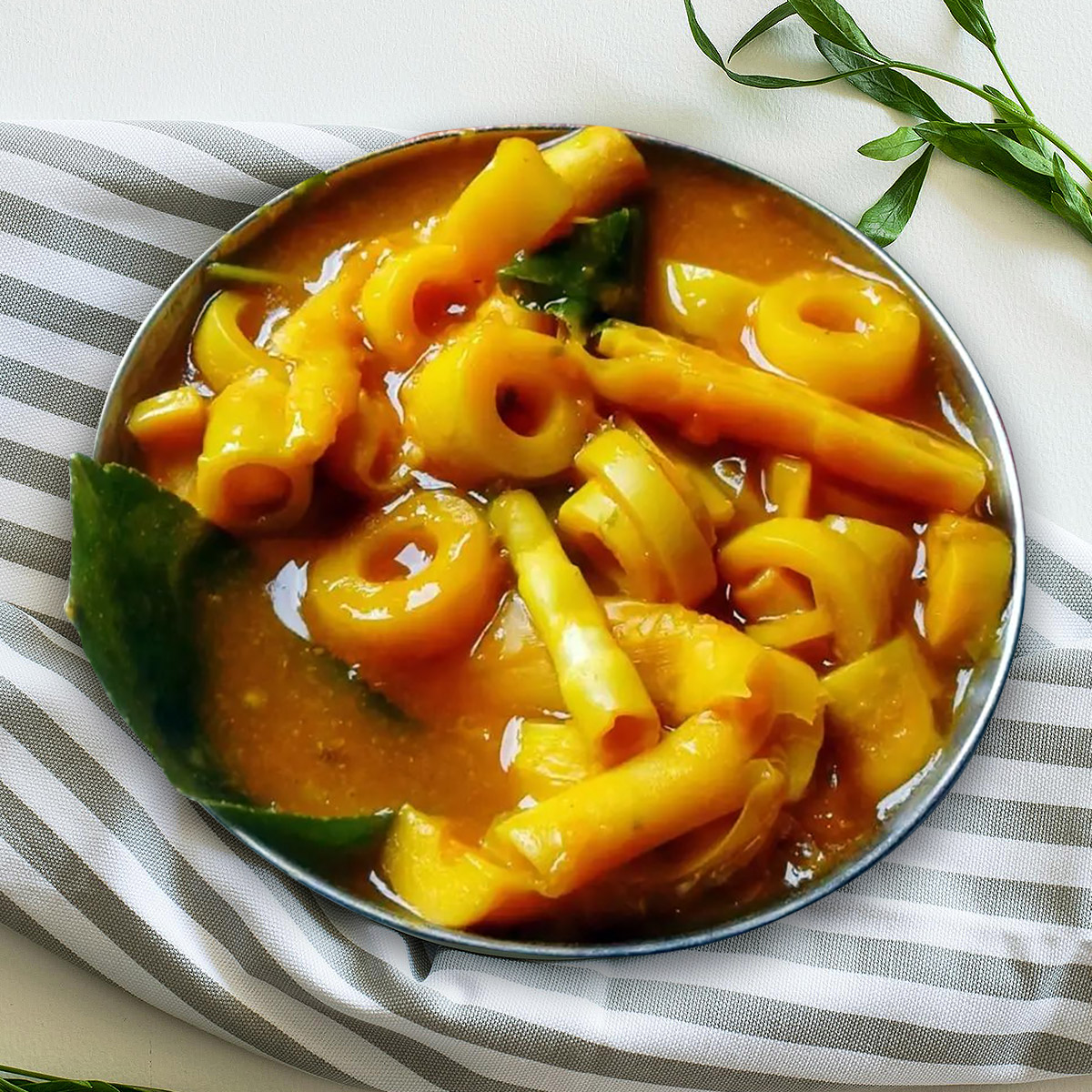
Although it is not a typical food item, it is worthy of recognition as a vital component of Tripuri food culture. The traditional rice wine is made by an alcoholic fermentation process using yeast culture and rice. The making of Chakhwi is considered to be an art form with many families having their unique recipes and methods.
The flavor of Chakhwi is dependent on the rice and the time of fermentation, and the type used. It is mildly sweet and lower alcohol content compared to more robust and more potent varieties. Chakhwi is more than just a drink, but also an important symbol of culture, typically consumed during celebrations, religious ceremonies, as well as significant social events.
Bengali Influences in Agartala Cuisine
Machher Jhol: The Quintessential Fish Curry
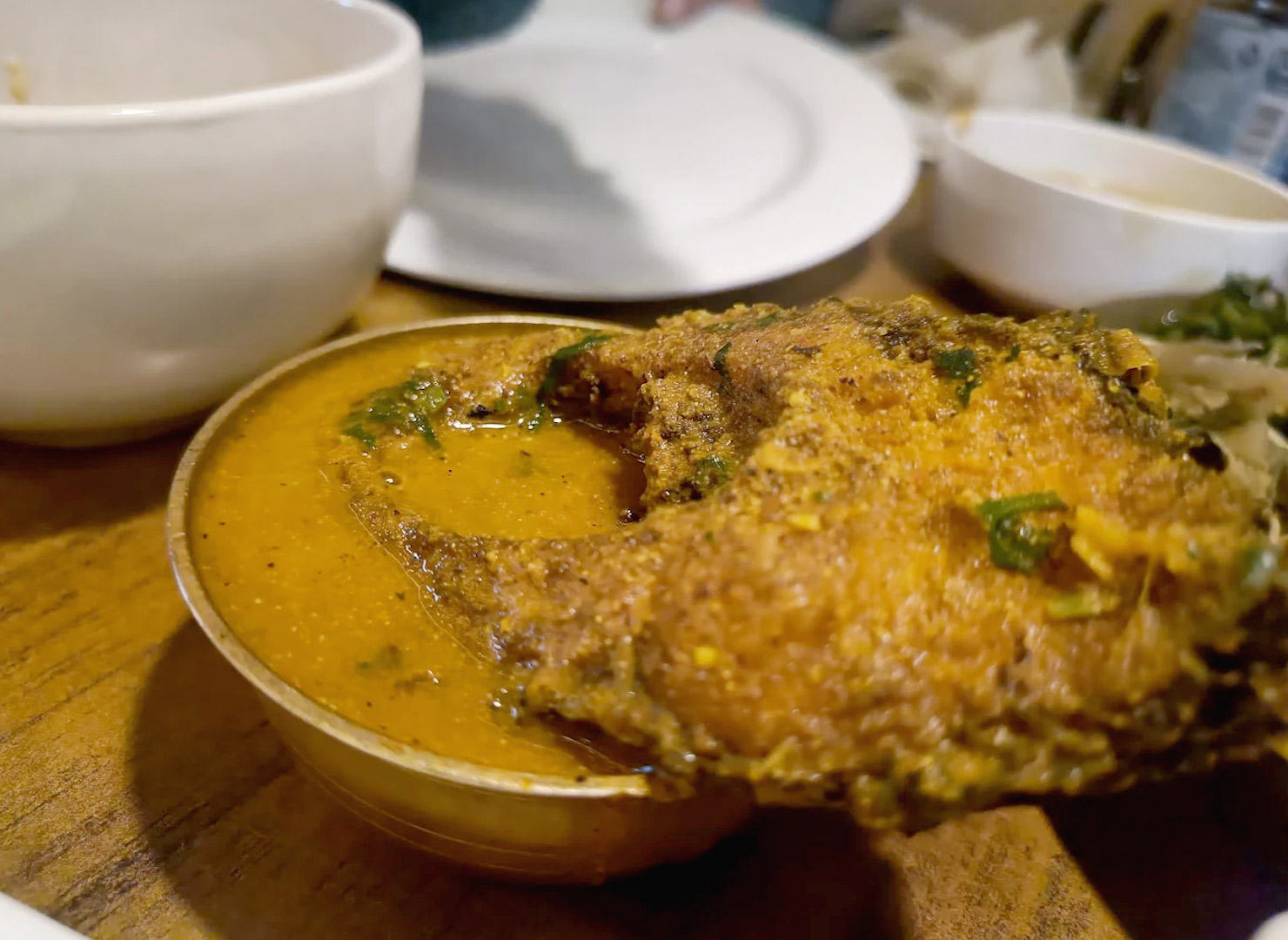
It is believed that the Bengali influence in Agartala is evident in the cooking of Machher Jhol, a light fish curry that is now a staple of local families. This dish is an excellent example of the way Bengali culinary techniques are modified to the local tastes and ingredients.
The curry starts with fish pieces, commonly Rohu or Katla, marinated in salt and turmeric. The fish is then lightly fried with mustard oil to golden and then placed aside. The same oil the mixture of garlic, ginger and onions is cooked until the onions are fragrant. The secret ingredient for authentic Machher Jhol is in the spices which includes red chili powder and coriander powder are combined with water to make an even paste.
The fried fish is slowly simmered in this spicy broth, along with green chilies and tomatoes. The final flavor is fresh cilantro, and a drizzle of mustard oil that imparts the distinctive pungent flavor of the Bengali cuisine is famous for. It's a light spicy curry that is a perfect match for rice that has been steamed.
Shukto: The Bitter-Sweet Vegetable Medley
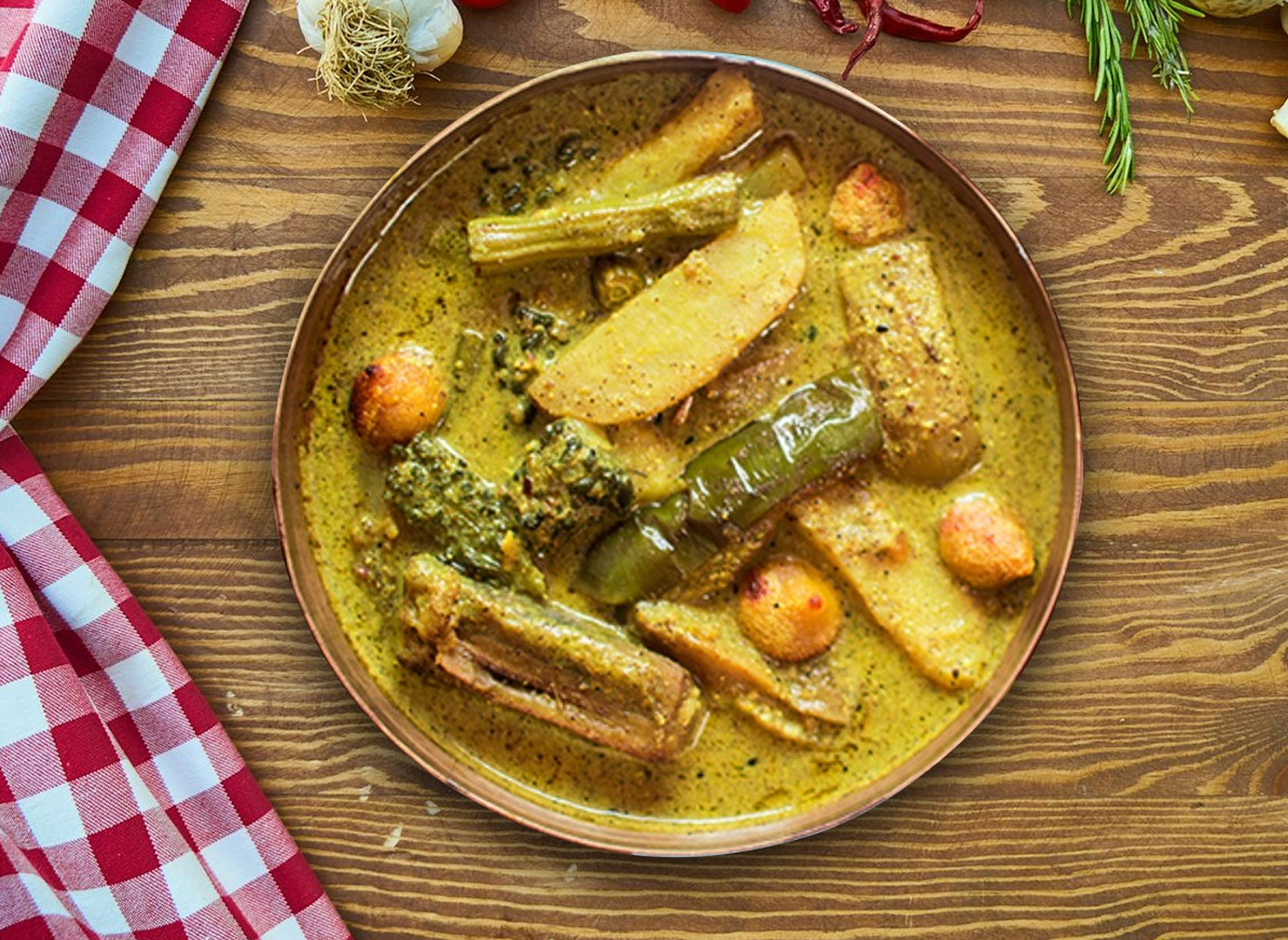
Shukto is a classic Bengali mixed-vegetable dish that has earned an undeserved place in Agartala families. This special dish blends vegetables with different flavors and textures, resulting in the perfect flavor profile that combines bitter, sweet and savory ingredients.
The typical dish includes bitter gourd, drumsticks sweet potato, ridge gourd and eggplant, but the exact ingredients vary according to the season and what is available. The cooked vegetables are cooked in an oil made from mustard seeds and poppy seeds, adding the richness and a slight taste of nutty. A tiny amount of sugar or jaggery can help to reduce the bitterness of certain vegetables.
What makes Agartala's rendition of Shukto unique is the inclusion of local wild vegetables and herbs, which give distinctive flavors that aren't found in traditional Bengali dishes. The dish is topped off with a smoky tang of panch phoron, dried red chilies, which create an aromatic end to this savory vegetable mixture.
Street Food Culture in Agartala
Momos: The Adopted Delicacy
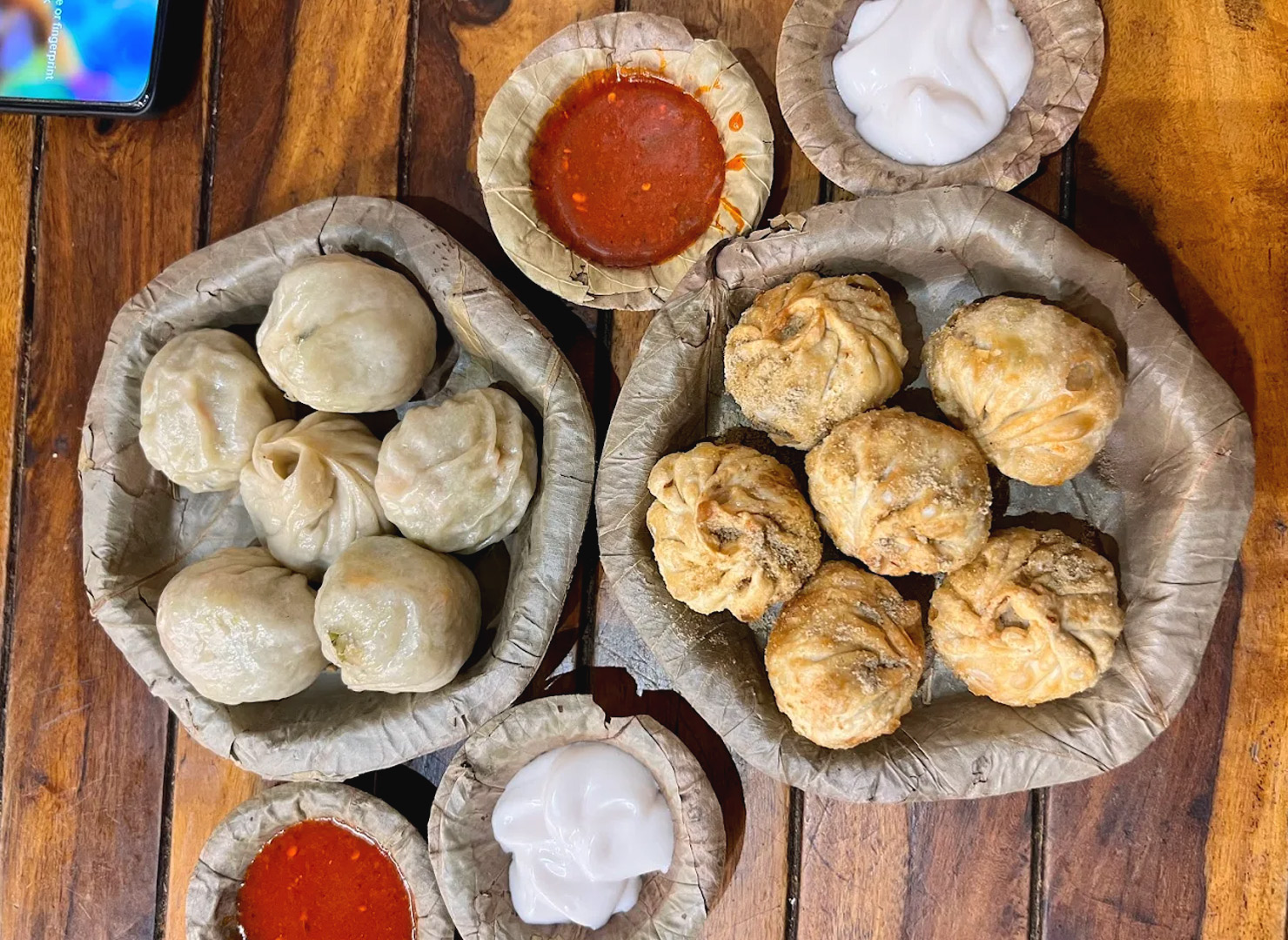
Although they're not from Tripura, momos have now become an integral part of the Agartala eating out scene. This version in Agartala is a variation of the Tibetan dumpling is adapted to local tastes, usually filled with local fish or with local herbs and spices.
The making of momos in Agartala usually involves filling with minced chicken, pork or fish, mixed with garlic, onions and ginger as well as local herbs. The skin for the dumplings is constructed of wheat flour, then rolled thin to create delicate little parcels which are then cooked to perfection. What is what sets Agartala momos out is their sauce that comes with them that is often made up of local chilies. Sometimes, it also includes fermented fish paste for extra umami flavor.
Puchka: The Local Take on Pani Puri
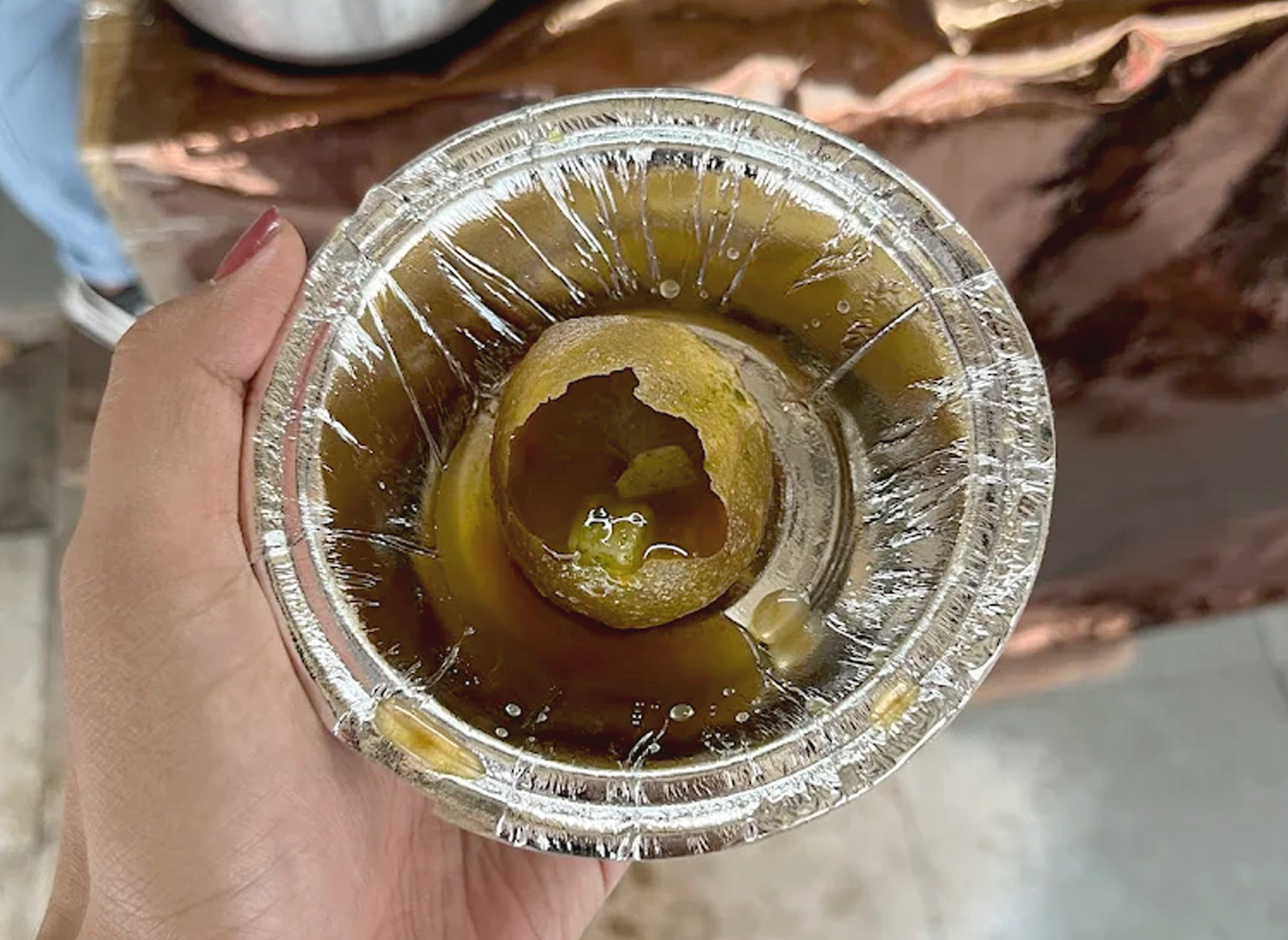
Puchka which is one of the Bengali variant that is a variation of pani puri, is loved by Agartala's street food vendors, each with their own unique twist. The semolina-crusted shells are filled with spiced potato as well as tamarind water. They typically include local chutneys prepared with local herbs and spices.
The tamarind water that is used in the puchka of Agartala often includes jaggery from the local date palms. This gives the drink a distinct sweetness that balances the tangy as well as spicy components. Some vendors add fresh, chopped herbs such as mint and cilantro, which are cultivated in the local garden, which enhances the freshness and scent that is a popular street food.
Traditional Cooking Methods and Techniques
Clay Pot Cooking
Traditional Tripuri cuisine is heavily based on cooking in clay pots that imparts an unique earthy flavor to the dishes. The clay pots that are unglazed commonly referred to locally as 'Khalai' are made of local clay and then prepared with a seasoning before serving. The porous nature of clay permits an even distribution of heat and aids in retaining moisture, making tender and delicious dishes.
Clay pot cooking is preferred for rice preparations as well as slow-cooked curries. Rice cooked with clay cookware has a distinctive scent and texture that is not easily duplicated by modern cookware. Traditional families from Agartala continue to use ceramic pots to cook special events as well as feasts for festivals.
Bamboo Cooking
The most original cooking techniques used in Tripuri cuisine is using bamboo segments to cook in cooking vessels. Bamboo pieces are freshly cleaned then used for steamed rice and vegetables, or even fish. This technique, also known as 'Moyakol', imparts the subtle aroma of bamboo to food items and is considered to be a healthy cooking method as it does not require oils or other fats.
Bamboo cooking is usually used in celebrations outdoors and during celebrations. Bamboo sections cooking on an open flame is a typical scene at the traditional festivities in Agartala which connects the local community with their traditional cooking methods.
Smoking Techniques
Smoking is a vital preservation and flavoring method in Agartala food preparation. Fish meat, fish, and even vegetables are typically smoking over wood fires to improve the flavor of food and increase their shelf lives. The type of wood used for smoking differs in each one, and each imparts distinct flavors on the foods.
Traditional smoking is performed with indigenous wood species that are plentiful in the forests of Tripura. The process of smoking is managed to ensure the desired level of flavor without compromising the natural flavor and flavor of ingredients.
Seasonal Specialties and Festival Foods
Monsoon Delicacies
The monsoon season is many items that are exclusive to this time of the year. Bamboo shoots are in their best during the rainy season, and many dishes are based on this seasonal ingredient. Wild herbs and vegetables which flourish during monsoon months are included into the daily menu, adding diversity and nutrients to your diet.
The activity of fermentation also increases in the monsoon season, since the conditions are humid and ideal to prepare various fermented food items which are consumed all through the all year. This is the case for fermented bamboo shoots, as well as fish pastes which are crucial ingredients in traditional cooking.
Festival Preparations
Festivals of religious significance and celebrations in Agartala include elaborate food preparations that highlight the best local food. At Kharchi Puja, which is one of the major celebrations in Tripura local cuisine, traditional dishes are made to offer offerings to gods. They include various rice dishes including fish curries, curries for fish, and sweet dishes prepared with local ingredients.
This New Year celebration, known as Boisuk, offers special meals which feature the best fresh ingredients of the season. Families create elaborate dishes that showcase their culinary talents and appreciate the abundance of fresh local produce.
The Role of Women in Preserving Culinary Traditions
Women play an integral part in preserving and transferring the traditional culinary practices of Agartala. The traditional knowledge of cooking techniques, ingredients preparation, and variations in recipes is most often passed on through mothers and daughters by experiences cooking in the kitchen.
A variety of traditional methods like the making of fermented paste fish or the best time for bamboo shoot fermentation are family secrets that women are able to share with their family. This oral tradition guarantees that the original flavors and methods are handed down from generation to generation.
Modern Adaptations and Fusion
In the same way that Agartala continues to advance its cuisine, the food has developed to incorporate more modern techniques and ingredients, yet still retaining its essence. Modern kitchens can make use of pressure cookers or gas stoves, however the basic flavor and ingredients remain the same.
Home cooks and young chefs are trying out fusion meals that blend classic Tripuri ingredients with modern techniques of cooking. This is ensuring that the cuisine is relevant and attractive to the younger generation and yet retains its original flavor.
Nutritional Aspects of Agartala Cuisine
The traditional food of Agartala is very healthy and focuses on fresh products, no processing and a balanced diet. Fish is a popular ingredient that is a great source of protein and omega-3 fatty acids. Moreover, the variety of vegetables will ensure the proper intake of vitamins and minerals.
Bamboo shoots as well as fish paste provide beneficial probiotics to your diet helping to improve digestion. The use of less oil and the focus on boiling and steaming as cooking techniques helps preserve the nutrients of the ingredients, while creating tasty dishes.
Conclusion: A Culinary Heritage Worth Celebrating
The food of Agartala is more than food. It is a symbol of the identity, culture and culture of Tripura. Every dish tells a tale of the region, its people and their connection to the natural surroundings. The unique blend of traditional Tripuri products and traditional cooking techniques along with Bengali influences creates a food environment that is distinct and very satisfying.
In the meantime, as Agartala continues to expand and evolve its food culture is facing the challenge of modernization, while trying to preserve its original nature. It is the responsibility of every generation to understand practices, learn, and preserve these traditions of cooking so that the delicious flavor and importance of the Agartala cuisine remain in the forefront of culinary excellence.
For those who visit Agartala, taking a look at the food culture of Agartala provides an authentic glimpse into the spirit of Tripura. From the bustling markets for street food to the traditional home-cooked meals, each bite offers a chance to learn about and appreciate the intricate cultural tangle that makes this northern Indian city unique. The food of Agartala isn't just about nourishment, it's about family, tradition as well as the celebration of a distinct heritage that merits respect and protection for the next generations.
For more about Tripura -
Tripura isn't just about its diverse and rich food culture, but also its diverse traditions, agriculture, and rural living. If you'd like to know more about the local villages, District, and regional charm of Tripura, go through this comprehensive guide to villages in India, Tripura.



